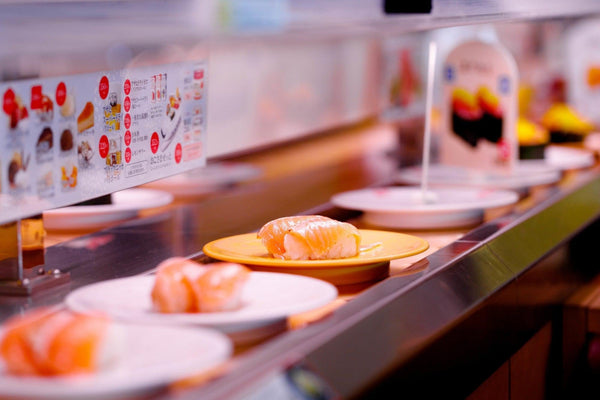
Jump to:
So you've decided to try out a conveyor belt sushi restaurant in Japan.
Excellent choice, welcome visitor!
But which one should you go to? What kind of conveyor belt sushi restaurant is right for you? After all, there seem to be so many choices available, both in Tokyo and across this great country. What's the best way to go about finding the right experience?
We've got answers for those questions and more, in this article all about kaiten-sushi or conveyor belt sushi restaurants in Japan.
Conveyor Belt Sushi: Not All Kaiten-Sushi Are Created Equal
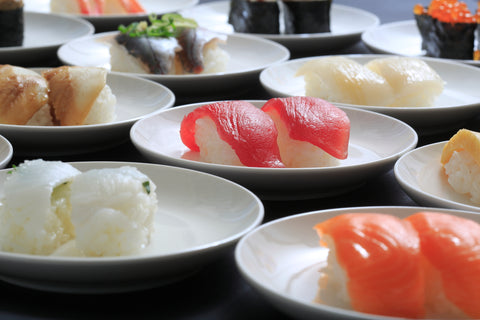
If you haven't done so already, we highly recommend reading our article about conveyor belt sushi before continuing onward here. That gives you the full rundown of what to expect in any kaiten sushi restaurant in Japan, from etiquette and process to food items, dining experience, price point and much more.
With that in mind, this edition of the Japanese Taste blog will focus on a range of national and regional restaurants in the conveyor belt sushi business, as well as some local chains in a handful of cities that are most frequented by visitors to Japan.
Just to recap some of the basics of conveyor belt sushi, remember that on a fairly consistent basis across Japan, you get what you pay for when it comes to kaiten-sushi.
If you opt for one of the national chains, the experience will be comparable whether you are in Tokyo, Kyoto, Kyushu, Hokkaido, or really anywhere else in the country. It's a known quantity and you're going to get a quality meal at an affordable price; not Michelin star sushi by any means, of course, but a quick in and out sushi to fit your itinerary and budget.
The entry level plate at one of these big chain rotary sushi restaurants was until recently 100 yen, going upwards to 400 or 500 yen depending on the item; inflation, however, is pushing these prices upwards of 15% to 20%.
In the category of conveyor belt sushi but at a higher price point, however, you're likely to experience a higher quality sushi in a moderately affordable range with a slightly more refined dining experience. These regional chains and local restaurants offer a kind of hybrid between the typical conveyor belt Sushi experience and a more traditional “sushi bar” as it were. The price tends to start at 150 or close to 200 yen per plate and go up to 600 or 800 yen, again depending on the item desired.
With all this in mind, let's dive into the range of options for eating conveyor belt sushi in Japan.
A Known Quantity; Nationwide Conveyor Belt Sushi Restaurants In Japan
Looking for a fast, efficient, consistently reliable and affordable sushi meal on your travels in Japan? You really can't go wrong with one of the big national chains that specialize in conveyor belt sushi.
These kaiten-sushi chains include Sushiro, Kura Sushi, Kappa Sushi, Hama Sushi, Uobei and Genki Sushi. With some but not much exception, they are rather interchangeable in quality and dining experience, and thus are best chosen based on location and convenience for your itinerary. Look for any of these on Google Maps, for example, and you're likely to see multiple outlets in your desired area.
Let's take a closer look at each of these nationwide Japanese conveyor belt sushi restaurant chains, and what they offer for the sushi-curious visitor.
Sushiro & Kura Sushi
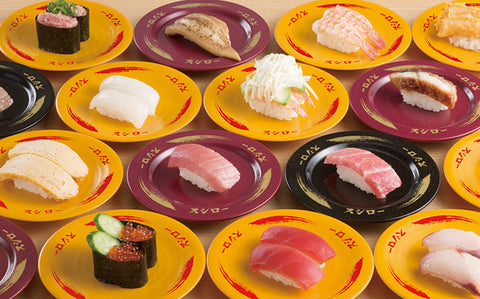
Both Sushiro and Kura Sushi top the list in terms of national recognition and brand awareness for conveyor belt sushi restaurants in Japan. They are easy to find in major cities such as Tokyo, Osaka, Kyoto and elsewhere, and can often be found along your drives or train trips as well.
With either of these conveyor belt sushi chains, you're going to get a pretty consistent experience no matter which you choose. The fish will be of good but not great quality, and it's likely to be a fairly thin slice and perhaps lesser quality cut, especially at the entry level price point plates.
Kura Sushi Is a favorite among many tourists because, not only do you order on a touch screen, you get to play a game at the end of your meal! For every five plates of sushi that you eat, you get a chance to win something by playing a short game on the touch screen. Prizes range from little toys to discounts on a meal, and even if you don't win anything it's rather fun and entertaining.
Sushiro boasts the highest revenue among Japanese conveyor belt sushi chains, and with good reason. They spend a lot on marketing and advertising campaigns, and they have built a reputation for quality and consistency in their 500+ conveyor belt sushi restaurants across Japan.
At Kura Sushi (which also has over 500 shops) and Sushiro – and at several of the others we will mention – many of the locations tend to be large and cavernous, with rows and rows of booths as well as some individual counter seats that are walled off to look and feel somewhat reminiscent of sitting in a cubicle. The dining experience here will typically be noisier and a bit more hectic than eating at a proper sushi restaurant or even a local conveyor belt sushi shop, but you're exchanging that to receive a lower price point and a quicker meal to fit your on-the-go itinerary.
Uobei: The Bullet Train of Kaiten-Sushi
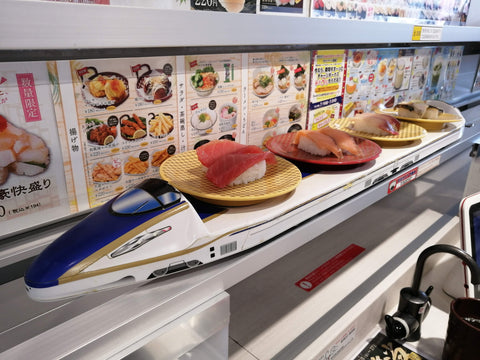
The most unique feature of this national conveyor belt sushi chain that you're likely to notice right away is the vehicle on which the sushi is delivered.
Instead of having items come around a conveyor belt simply on a plate, your customized order is delivered on a high speed track that arrives at your seat in the form of a tray in the shape of, you guessed it, a shinkansen or bullet train.
This makes a visit to Uobei a highly instagrammable and photogenic experience, and one that you're not likely to forget anytime soon. That aside, is the sushi of any markedly different quality than the aforementioned and the other big rotary sushi chains? Probably not, but whether you're a YouTube influencer or traveling with a young child, it's hard to go wrong with Uobei.
Genki Sushi: That Happy-Healthy Feeling
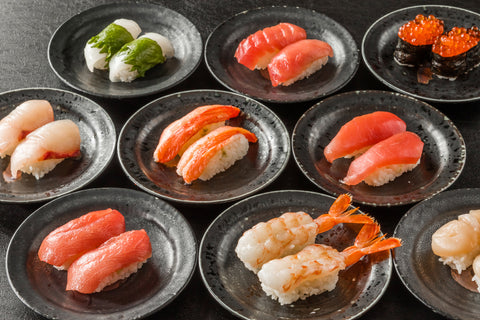
“Genki” Is a great word in Japanese. it literally means healthy, but it also implies high energy, healthy, and so on.
A trip to Genki Sushi, therefore, has got to be a good time, right?
Of course, why not. If you've gone onto Google Maps and Genki Sushi happens to be the closest place to where you're at or where you're going to be (they have over 150 locations throughout Japan), by all means stop in and get some Genki!
The yellow sign with the energetic face is hard to miss, and the ambiance inside with bright lighting, energetic music and a high din go right along with it. Like many of the other national kaiten-sushi chains, you order on a touchpad, and the selection and price points are equally wide.
Hama Sushi & Kappa Sushi
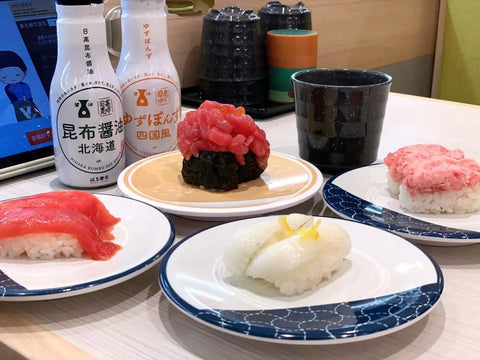
Between these two conveyor belt sushi chains, you'll find over 800 locations across Japan.
Hama Sushi offers specials during weekdays, and still serves 100-yen plates at some of its locations as of this article’s writing – although inflation is putting pressure on this price point. They feature “robots” at some of their locations, and the experience and ambiance tend to be bright and fast – what one expects in general from a conveyor belt sushi chain.
Kappa Sushi has slightly fewer locations than some of its rivals, and used to have an “all you can eat” sushi option as well as 100-yen options at least before pandemic times. They still have a faithful following in different parts of the country, and are a solid choice if one comes up on your search or travels.
Regional Conveyor Belt Sushi Chains
If you'd rather venture off the beaten path a little, then a regional conveyor belt sushi shop or even a local option might be the right choice for you.
Let's first cover some of the regional chains, broken down by the regions that visitors to Japan tend to frequent the most.
Hanamaru: Hokkaido’s Popular Kaiten-Sushi
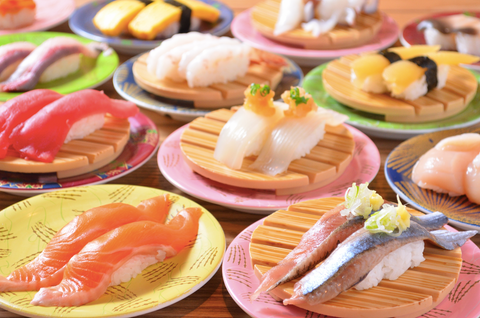
Nemuro Hanamaru is one of the more popular regional options for conveyor belt sushi in Japan. Its flagship location in Sapporo train station, for example, is so popular that you either wait an hour or two in line, or have to show up well before opening time to get a number and then come back right when the doors slide open again – to a crowd of waiting patrons, of course.
It's worth the wait though, whichever way you choose, as long as you're prepared to take some time out of your itinerary to enjoy some of the best conveyor belt sushi you'll ever have. Local and regional favorites from Hokkaido are featured on the menu of course, including crab, scallops, squid, salmon roe and much more.
Nemuro Hanamaru has become so popular among visitors to Hokkaido as well as Hokkaido transplants in Tokyo, in fact, that they have opened up a location in Tokyo.
Toriton
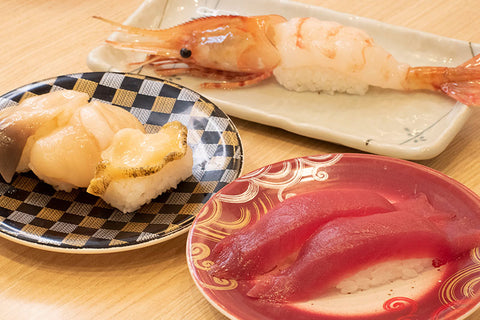
Toriton Is another Hokkaido rotary sushi chain that has also opened up a location in Tokyo. While it might not have the insanely long lines or social media popularity that Hanamaru does, Toriton is well worth a visit if there's one along the way during your Hokkaido travels.
Hokkaido residents tend to be even more fervent connoisseurs of sushi and fresh seafood than their counterparts in Tokyo, and that will help you reap the benefit of a delicious sushi experience at these rotary sushi restaurants. Toriton is a great example of that, dishing out late after plate of scrumptious sushi that is consistently high quality and good cuts, offered at an affordable price point.
Sushi Choshimaru: Kanto’s Kaiten-Sushi Chain
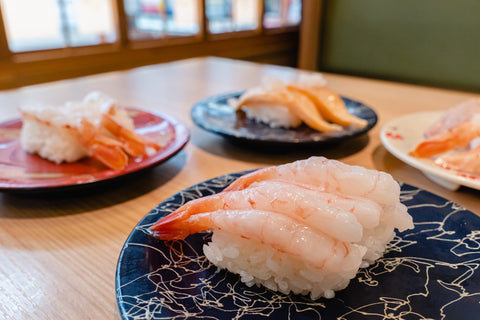
Speaking of Tokyo, if you are in or around the Tokyo/Kanto area, you can't go wrong with Sushi Choshimaru.
While this regional Tokyo conveyor belt sushi chain may not have as many locations as the national chains, they make up for it with high quality and great service. fans of Sushi Choshimaru go out of their way to enjoy the sushi here. The service level is said to be top-notch, and the rotating specials are very popular and always worth checking out.
Kansai Region: Gatten Sushi & Nigiri Chojiro
People who live in Osaka and elsewhere in the Kansai region of Japan tend to be very proud when it comes to their regional food differences, especially compared to the cuisine of Tokyo. Sushi is no different, and there is no exception either when it comes to conveyor about sushi restaurants in and around Osaka, Kyoto and elsewhere in this part of Japan.
Nigiri Chojiro
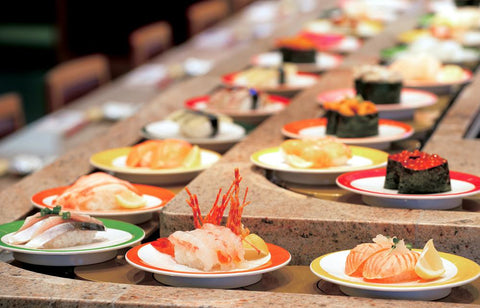
Nigiri Chojiro Is always a great option wherever you happen to be in the Kansai region. Our last visit to one of their locations near Osaka reminded us a lot of the conveyor belt sushi we enjoyed in Hokkaido. Take that as a high compliment, Chojiro!
This is the type of kaiten-sushi that looks less like a conveyor belt sushi warehouse and feels much more like a neighborhood sushi bar, as it were. The service was friendly and personable, and the sushi was of course of a high quality. The scallops, toro and hokkigai were all amazing!
While not a “budget sushi” option that one would eat on a daily basis, Nigiri Chojiro is a great treat and consistently provides a solid experience when it comes to rotary sushi dining.
Gatten Sushi
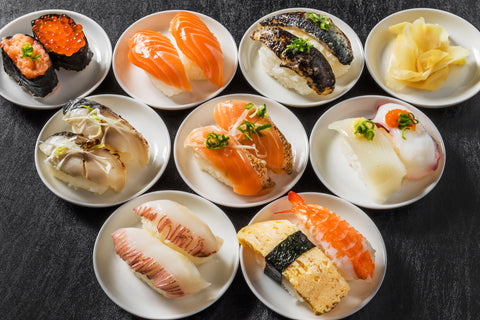
If there isn't a Nigiri Chojiro near you or if their wait is too long, Gatten Sushi is a reliable alternative in the Kansai area.
More similar to Chojiro and less factory-esque than Kura Sushi or Sushiro, Gatten Sushi has managed to grow its operations to over 250 locations in Japan, while maintaining strict levels of quality in both food and service.
If you're familiar with Osaka and the Kansai mentality in general, you'll know that folks around here are pretty meticulous and finicky when it comes to their food. Gatten Sushi serves their market well, and is always a solid choice.
Kanazawa: Famous for Quality Seafood
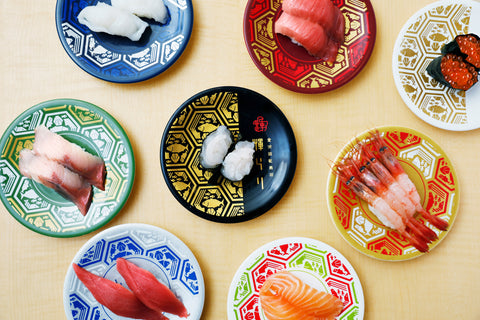
Speaking of meticulousness, Kanazawa is known throughout Japan as being perhaps the highest quality seafood around.
This is displayed in its sushi restaurants, of course, including two rotary sushi chains that are based in Kanazawa but can be found elsewhere in Japan as well. These are Mori Mori Sushi and Mai Mon Sushi.
A visit to either of these conveyor belt sushi shops will not disappoint. Expect to spend between 2,000 yen to 4000 Yen per person at either Mori Mori Sushi or Mai Mon Sushi – but know that you’re getting great quality sushi at a mid-range price point (which generally means “affordable” for those coming from the US, Australia or Europe, for example).
Favorites here include tuna and salmon, of course, as well as crab and uni. Depending on the season, items like mackerel and even sardines are great – be sure to ask the staff for their recommendations!
Local Conveyor Belt Sushi in Japan
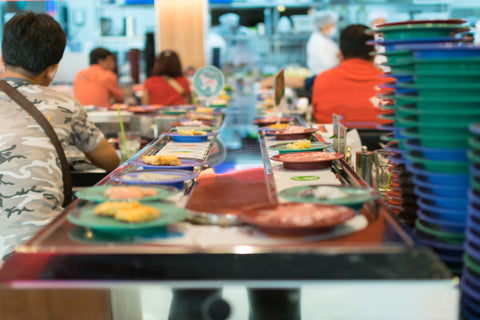
Last but certainly not least, we would like to make mention of local conveyor belt Sushi or kaiten sushi restaurants that can be found in cities and towns across Japan.
From Tokyo and Kyoto to smaller cities and even country roads, you're likely to find a good conveyor belt sushi restaurant simply by asking around or checking on Google Maps.
While all of the national and regional chains we've talked about are good bets, for those more adventurous and willing to try something different, rewards can be found in these local shops.
Now one drawback might be that they don't have a touchpad for you to order in English and staff may or may not be able to communicate in English. Still, there are universal languages when it comes to food, and whether you are looking at items rolling by on a conveyor belt or seeing photos on a touchpad, you'll certainly be able to get by in these restaurants and enjoy some high quality sushi at affordable prices.
Conveyor Belt Sushi In Japan: Always A Good Bet
Whether you're opting for a national chain like Kura Sushi or Sushiro, or you're venturing into a regional chain or even local conveyor belt sushi shop, your rotary sushi dining experience is bound to be good or even great.
With a little planning and research, and some attention to the menu items and a glance around at what other patrons are enjoying, your kaiten-sushi dining experience will be one not to forget.
Have you ever enjoyed conveyor belt sushi, either in Japan or elsewhere in the world? Let us know in the comments below. and happy food travels!


0 comments